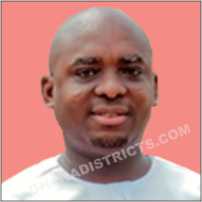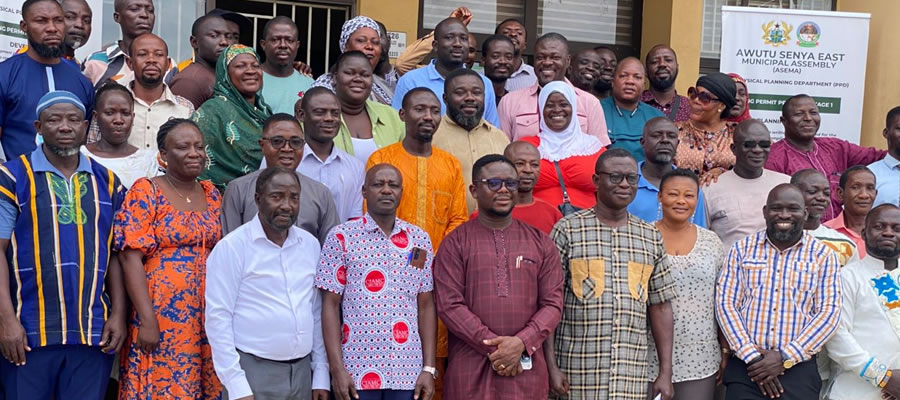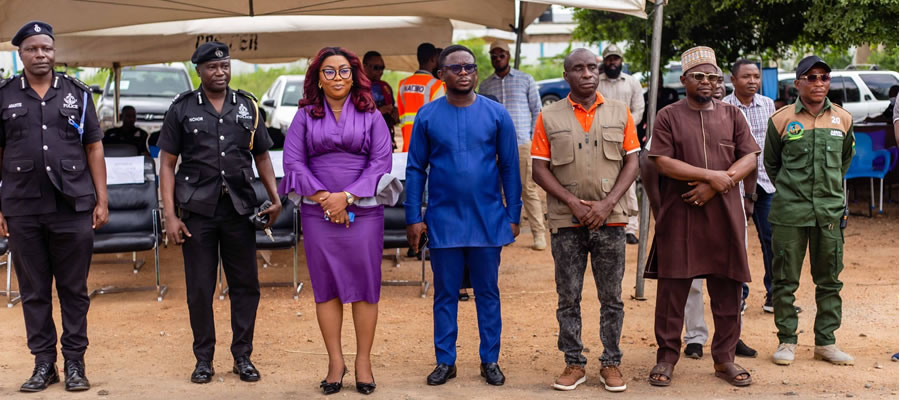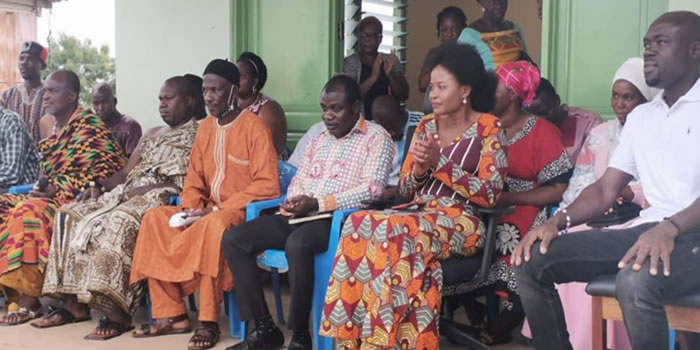

Location and Size
The Awutu Senya East Municipal is situated between latitudes 5o 20’N and 5o 42’N and longitudes 0o 25’W and 0o 37’W at the eastern part of the Central Region of Ghana. It covers a surface area of 404 square km.
The Municipality is separated by the Gomoa East District which has dotted enclaves surrounding it. The southern part stretches along the Gulf of Guinea constitutes the Senya traditional area and the Northern part of the District is made up of the Awutu traditional area which borders Gomoa and Agona Districts to the West. In the North-Eastern part is West Akim Municipal.
Climate
The Municipality has mean annual minimum and maximum temperatures of 22°C and 38°C, respectively. It experiences two (2) main seasons namely; rainy and dry seasons. There is a major rainy season from April to July and a minor season from September to November. The dry season starts from November and ends in March. The rainfalls figures of the District are quite low (40cm–50cm) along the coast but are higher in the hinterland (50cm–70cm) annually).
The Municipality is also influenced by the South-West Monsoon winds and the North-East Trade Winds (Hamattan winds). The former brings rainfall whilst, the latter brings dry conditions.
Soils
The Municipality is underlain by the Birimian rocks which consist of granites and phyllites and these to a large extent is determined by the topography of those areas. In the semi-deciduous forest zone, the soil type is loamy-sandy making the place suitable for arable farming. It supports the growth of several crops like pineapple, cassava, yam, maize and citrus among others. Soil found in the southern zone are characterised by clay with high salinity and therefore do not support the cultivation of many crops, but provides opportunities for ceramic and pottery industries. However, vegetables can be grown in some parts of the low-lying and savannah characterised vegetation at the coastal part of the Municipality. This area is also conducive for livestock and large-scale poultry production which is yet to be exploited.
Vegetation
The vegetation of the Municipality is made up of degraded semi-deciduous forest and coastal savannah grassland. About 70% of the district (almost all of the Northern part) is of semi-deciduous forest with cocoa and oil palm constituting the major crops cultivated. Forest are found in areas around Nyarkokwaa, Bontrase, Bawjiase and Osae-Krodua.
The savannah grassland is found along the Southern Coastal areas of Senya and its environs. These vegetation situations influence to a large extent the kind of farming activities and other economic activities in both vegetation by the people who residing there. The figure below shows the vegation details of the Municipality.
Figure 1
Source: PPD. ASDA, 2017
Relief and Drainage
The Awutu-Senya land is characterised by isolated undulating highlands. However, lowlands with isolated hills are the main land feature along the coastline of Senya.
Two major rivers, Ayensu and Okrudu drain into the sea and occasionally cause flooding during the rainy season. There are also streams and small rivers that traverse the lowland plains stretching from Winneba to coastal plains of Senya.
Date Created : 10/21/2024 12:00:00 AM











 facebook
facebook
 twitter
twitter
 Youtube
Youtube
 +233 593 831 280
+233 593 831 280 0800 430 430
0800 430 430 GPS: GE-231-4383
GPS: GE-231-4383 info@ghanadistricts.com
info@ghanadistricts.com Box GP1044, Accra, Ghana
Box GP1044, Accra, Ghana